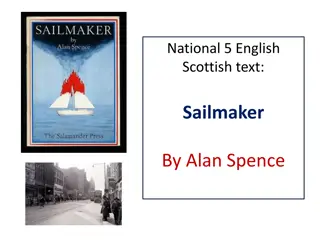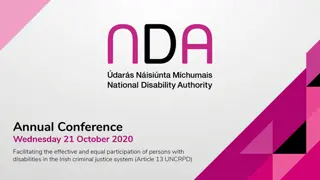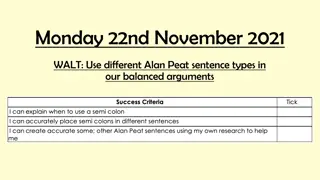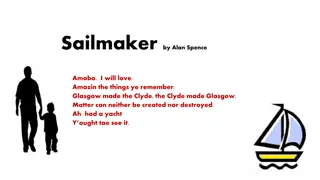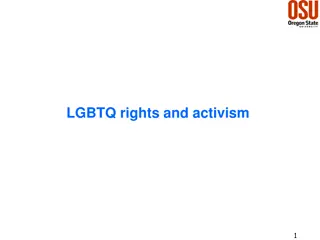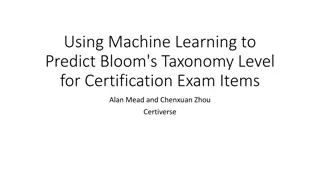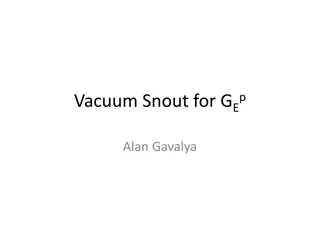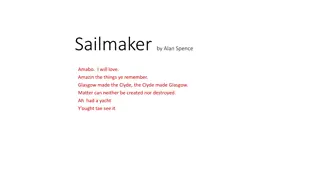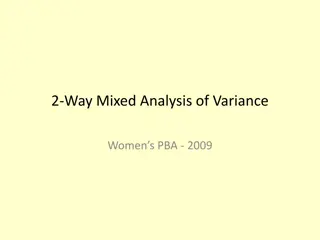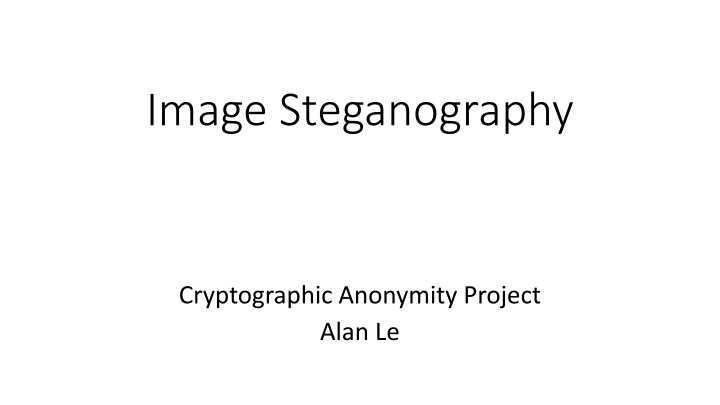
Exploring Image Steganography for Anonymity and Cryptographic Projects
Discover the world of image steganography with a focus on anonymity and cryptographic applications. Learn about the basics, implementation methods, steganalysis, and implications for privacy and security. Uncover the potential of combining steganography with encryption for enhanced data protection.
Download Presentation

Please find below an Image/Link to download the presentation.
The content on the website is provided AS IS for your information and personal use only. It may not be sold, licensed, or shared on other websites without obtaining consent from the author. If you encounter any issues during the download, it is possible that the publisher has removed the file from their server.
You are allowed to download the files provided on this website for personal or commercial use, subject to the condition that they are used lawfully. All files are the property of their respective owners.
The content on the website is provided AS IS for your information and personal use only. It may not be sold, licensed, or shared on other websites without obtaining consent from the author.
E N D
Presentation Transcript
Image Steganography Cryptographic Anonymity Project Alan Le
A little background Steganography originates from historical times. (invisible ink as an example) Steganography is the practice of concealing secret data in non-secret data. The carrier should look unsuspicious. Data like audio, text, or video, can be hidden in most file formats if the carrier size is large enough.
Project Goals Learn more about Steganography in general Implement some sort of Image Steganography program (LSB method) Learn about how it applies to anonymity and how effective it is Find out what steganalysis is about
Basic LSB Steganography Implementation My program can encode a text message in a BMP file and decode it later to retrieve the text. I used a C++ library called EasyBMP to process BMP files My algorithm stores one byte in the least significant bits of two pixels (one bit for each RGBA component). Places each byte sequentially from the first pixel (top left corner). Currently only works with BMP. BMP files were easier to transform than other image formats, like JPEG.
Steganalysis Detecting hidden messages is easiest when you have the original image for comparison. For other cases, various kinds of statistical analysis can be used to detect steganography, such as RS analysis, Sample Pairs analysis, Chi Square analysis.
Steganography in Anonymity context Hiding messages in carrier files doesn t necessarily give anonymity. An attacker can still see that files are being sent between users Combining Steganography with encryption and other anonymity protocols we ve discussed in class can be great for privacy LSB Steganography is pretty easy to detect nowadays. (it was more useful in the past). More complex Stenographic methods can be useful to avoid detection.
Conclusion I learned a lot about Steganography in my research. For future work, I would add more features to my implementation, namely steganalysis for other kinds of secret messages, more format support (PNG, JPEG, MP3), different embedding techniques, obfuscation/encryption
Literature Sources Fridrich, J., Goljan, M., & Du, R. (n.d.). Detecting LSB steganography in color, and gray-scale images. IEEE Multimedia, 22-28. Ker, A. (2004). Quantitative evaluation of pairs and RS steganalysis.Security, Steganography, and Watermarking of Multimedia Contents VI. Rodriguez, B., Peterson, G., & Bauer, K. (n.d.). Fusion of Steganalysis Systems Using Bayesian Model Averaging. IFIP The International Federation for Information Processing Advances in Digital Forensics IV, 345-355. El_Rahman, S. (2015). A Comprehensive Image Steganography Tool using LSB Scheme. International Journal of Image, Graphics and Signal Processing IJIGSP, 10-18. Newman, R., Moskowitz, I., Chang, L., & Brahmadesam, M. (2002). A Steganographic Embedding Undetectable by JPEG Compatibility Steganalysis.Information Hiding Lecture Notes in Computer Science, 258-277. Boehm, B. (2014). StegExpose - A Tool for Detecting LSB Steganography. http://arxiv.org/pdf/1410.6656v1.pdf Westfeld, A., & Pfitzmann, A. (n.d.). Attacks on Steganographic Systems. Information Hiding Lecture Notes in Computer Science, 61-76. Macklin, P. EasyBMP. http://easybmp.sourceforge.net/ Fridrich, J., Goljan, M., & Du, R. (n.d.). Reliable detection of LSB steganography in color and grayscale images. Proceedings of the 2001 Workshop on Multimedia and Security New Challenges - MM&Sec '01.




